Prepare for Audit Success - SOC Readiness Approach
- Carl Grifka
- May 15
- 3 min read
Introduction
As Software as a Service (SaaS) companies continue to process and store more sensitive customer data, obtaining an unqualified SOC 2 report has become the foundation of building and maintaining digital trust with their clients. In fact, we have seen a trend of more requests for SOC 2 audit reports from SaaS companies, as their clients have improved their own internal vendor management and onboarding practices, with an emphasis for organizations that handle their sensitive data.
However, jumping straight into a SOC 2 audit examination, without adequate preparation, often leads to material control deficiencies and costly rework during and after the audit. By adopting a structured SOC 2 readiness process, service auditors, like Alpha Secure, can help its SaaS clients streamline their SOC 2 controls design and implementation, and surface issues earlier in the SOC readiness process. Leveraging a SOC 2 readiness approach in this way can significantly reduce costly inefficiencies later, when a formal SOC 2 audit is conducted for the SaaS solutions company.
Understanding SOC 2 and the AICPA Trust Services Criteria
SOC 2 examinations, governed by the AICPA’s Trust Services Criteria (TSC), focus on five core criteria: Security (mandatory), Availability, Processing Integrity, Confidentiality, and Privacy. Licensed CPA accounting firms, like Alpha Secure, are able to perform SOC 2 engagements, to attest whether an organization’s controls meet the applicable trust services criteria selected for the SOC 2 report.
For SaaS clients, whose business models are reliant on providing reliable, secure, and confidential data processing and storage solutions to their clients, proper alignment to each selected TSC to be included within their SOC 2 audit is needed.
The Readiness Process: From Preparation through Controls Implementation
Prepare:
Scoping and Objective Setting
Understand the SaaS company’s “in-scope” technology infrastructure, applications, and processes that interact with its customers’ data.
Define the SaaS company’s system description, which defines their service scope, objectives, and the functionality of its systems.
Determine the SaaS company’s system boundaries, complementary user-entity controls (CUECs), and which TSC categories are in-scope for the audit.
Gap Analysis (Readiness Assessment)
Assess the SaaS company’s existing policies, procedures, and technical controls against the selected TSC points of focus, which correlate to required controls, as defined by the AICPA.
Determine if the required controls have been both designed properly, and if so, were implemented at the SaaS company. Based on the assessment of controls design and implementation, the service auditor will identify control gaps (e.g., missing incident response procedures, inadequate user access practices), requiring remediation by the SaaS company, before a SOC 2 audit begins.
The service auditor will prepare a formal analysis to document the control gaps, and an example remediation plan to address these deficiencies. This document will be provided to the SaaS company, in order to help them understand what additional controls will need to be added, and/or improved, to meet the control requirements as described in the points of focus for each TSC in-scope for the future SOC 2 audit.
Implement:
Control Implementation and Documentation
At this stage, the SaaS company will take a period of time to address the controls gaps to meet the required control guidance. The service auditor may provide advisory assistance during this phase, but will not formally implement any controls on behalf of the organization. The audit firm cannot act as Management, to preserve its ability to perform the SOC 2 audit after the required controls have been implemented by the company.
The SaaS company will also work to improve its existing controls documentation during this time, to better reflect their improved controls environment. Documentation at this stage may include formal policies, process flowcharts, and control narratives. These artifacts help support the SOC 2 description of the system, in addition to the required control practices.
How Leveraging a Proper SOC Audit Readiness Approach Reduces Inefficiency
Clearly Defined Scope, System Description, and Stakeholder Alignment
Early Identification and Remediation of Control Gaps
Proactive Control Testing and Validation
Conclusion:
For SaaS providers, a well-orchestrated SOC 2 readiness process paves the way for a smoother examination and helps elevate the organization’s overall control environment. By properly scoping, performing a thorough gap analysis, and properly documenting controls through their implementation, SaaS companies can minimize future audit surprises. Additionally, future SOC audit time and cost may be reduced. Proper preparation and completion of a SOC readiness approach is the hallmark of an organization committed to both controls excellence and digital trust with its stakeholders.


Comments